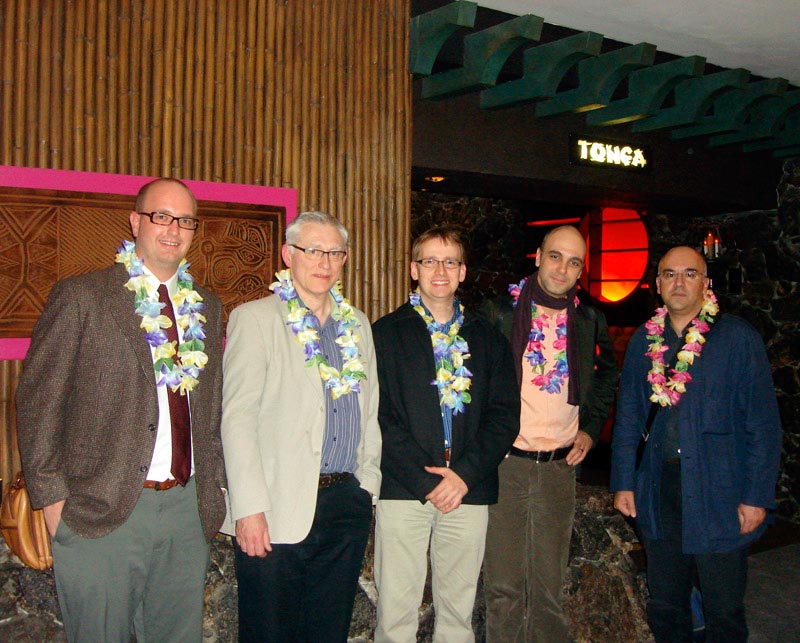At the kind invitation of Scott Lukas, Chair of Anthropology and Sociology at Lake Tahoe College, I was invited to speak on a panel at the 107th annual meeting of the American Anthropological Association (AAA) this past Friday, November 21, at the San Francisco Hilton. Each member of the panel delivered a paper, followed by a discussion and Q&A session with the audience.
Experiential, Branded, and Lifestyle Spaces: Dialogues Between Architecture and Anthropology was a multi-disciplinary panel that included noted authors and scholars who study theming, including Hai Ren, John Hannigan, Scott Lukas, Brian Lonsway, Miodrag Mitrasinovic, and Brian McLaren.
Scott Lukas is the author of two related books, The Themed Space, and his latest, Theme Park. Also on the panel was Miodrag Mitrasinovic, Associate Professor of Architecture at Parsons, and author of the seminal Total Landscape, Theme Parks, Public Space. Rounding out the bill were Brian Lonsway, Associate Professor of Architecture at Syracuse University, John Hannigan, Professor of Sociology at the University of Toronto and the author of Fantasy City, and Hai Ren, Assistant Professor of East Asian Studies at the University of Arizona. Brian McLaren, Associate Professor of Architecture at the University of Washington, moderated the discussion that followed.
The panel’s purpose was to expand on the dialogue between architecture and anthropology, and included case studies on place branding, contemporary lifestyle and retail stores, shopping malls and theme parks, and casinos around the world.
I was asked to speak about my visit to Dubai last April, and I presented a slideshow titled Modern Antiques: Imaging History in Dubai. In this presentation, I outlined the ways in which Dubai is using theming to fabricate an imagined historical identity.
MADINAT JUMEIRAH imagines a classical age.
WAFI CITY MALL imagines an ancient civilization.
IBN BATTUTA MALL imagines an islamic tradition.
WILD WADI WATER PARK imagines a rich folklore.
I then gave a brief overview of the ongoing DUBAILAND project.
After the panel session, some of the group and I made our way up the hill to the San Francisco Fairmont Hotel's infamous Tonga Room for dinner and cocktails. It was appropriate to continue our discussion on theming at one of the oldest original tiki bars in america.
The next day, both Miodrag and Scott were kind enough to grant me interviews regarding their work as well as my own. Thanks to all on the panel for a fascinating and very fruitful discussion of theming as global cultural and aesthetic phenomenon.



